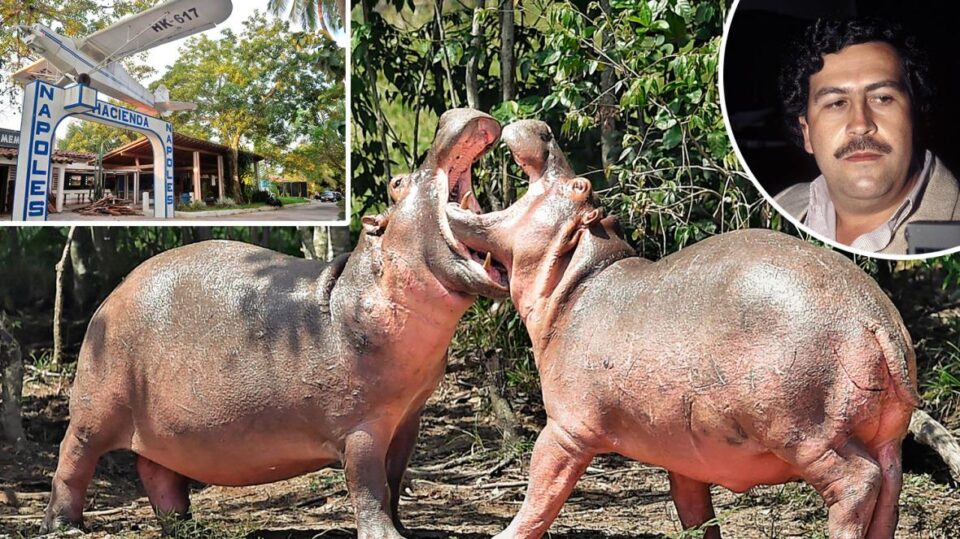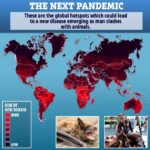Pablo Escobar is a name Colombia has been trying to forget for the last 30 years.
One of the most notorious criminals of all time, he was the founder of the infamous Medellín drugs cartel in the 1980s, responsible for kidnappings, bombings and indiscriminate assassinations.
At one point he was thought to be one of the world’s richest men.
But the cocaine kingpin is also responsible for what scientists call an ecological time-bomb.
A group of hippos originally imported by Escobar to his private zoo decades ago has multiplied and, according to scientists, is now spreading through one of the country’s main waterways – the River Magdalena.
Last month, a study published in the Biological Conservation journal said culling the animals was the only way to mitigate their environmental impact.
“It is obvious that we feel sorry for these animals, but as scientists we need to be honest,” Colombian biologist Nataly Castelblanco, one of the study’s authors, told the BBC.
“Hippos are an invasive species in Colombia and if we do not kill a part of their population now, the situation could be out of control in just 10 or 20 years.”
The rise of the so-called “cocaine hippos” began in 1993 after authorities killed Pablo Escobar and seized his luxury estate Hacienda Napoles, about 250km (155 miles) north-west of the capital Bogotá.
Animals found there were distributed to zoos across the country, but not the hippos.
“It was logistically difficult to move them around, so the authorities just left them there, probably thinking the animals would die,” Ms Castelblanco said.
Instead, they thrived.
Over the years, scientists have tried to calculate how many hippos are living in Colombia’s waterways, with estimates ranging from 80 to 120 animals.
“It is the biggest hippo herd outside Africa, which is their native region,” veterinarian and conservationist Carlos Valderrama told the BBC.
Numbers are projected to only get bigger. Ms Castelblanco and her peers say the population will reach over 1,400 specimens as early as 2034 without a cull – all of them descended from the original group of a male and three females.
In the study, they envisaged an ideal scenario in which 30 animals need to be culled or castrated every year to stop that happening.
Ms Castelblanco explains that the “cocaine hippos” have seized an evolutionary opportunity. They do not have natural predators in South America, meaning they can reproduce much more easily.
The weather also helps: in Africa, the population is in part controlled by droughts that do not take place in Colombia. Indeed, conditions in their South American home seem so ideal for the hippos that studies show they start reproducing at earlier ages, she said.
Scientists studying the hippos’ environmental impact believe they could affect the local ecosystem in a number of ways: from displacing native species already under threat of extinction, like the manatee, to altering the chemical compositions of waterways, which could endanger fisheries – though other studies suggest they might help the environment too.
“The hippos are spreading across Colombia’s biggest river basin, from which many thousands of people make their living,” the biologist said. “There have been sightings of hippos as far as 370km from Hacienda Napoles.”
bbc




